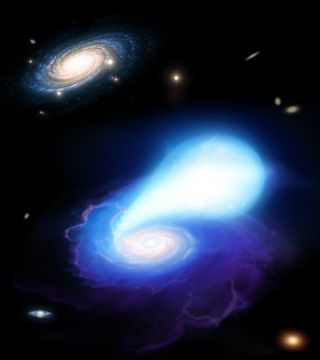 Astronomers and astrophysicists have found that some of the Universe’s loneliest supernovae are likely created by the collisions of white dwarf stars into neutron stars.
Astronomers and astrophysicists have found that some of the Universe’s loneliest supernovae are likely created by the collisions of white dwarf stars into neutron stars.
The study was led by the University of Warwick and involved research from the University of Leicester. It is published by the journal Monthly Notices of the Royal Astronomical Society.
“Our paper examines so-called `calcium-rich' transients” says Dr Joseph Lyman, from Warwick. “These are luminous explosions that last on the timescales of weeks, however, they're not as bright and don't last as long as traditional supernovae, which makes them difficult to discover and study in detail”.
Previous studies had shown that calcium comprised up to half of the material thrown off in such explosions compared to only a tiny fraction in normal supernovae. This means that these curious events may actually be the dominant producers of calcium in our universe.
Read the full press relese from the University of Leicester Press Office
Image credit: © Mark A. Garlick / space-art.co.uk / University of Warwick

